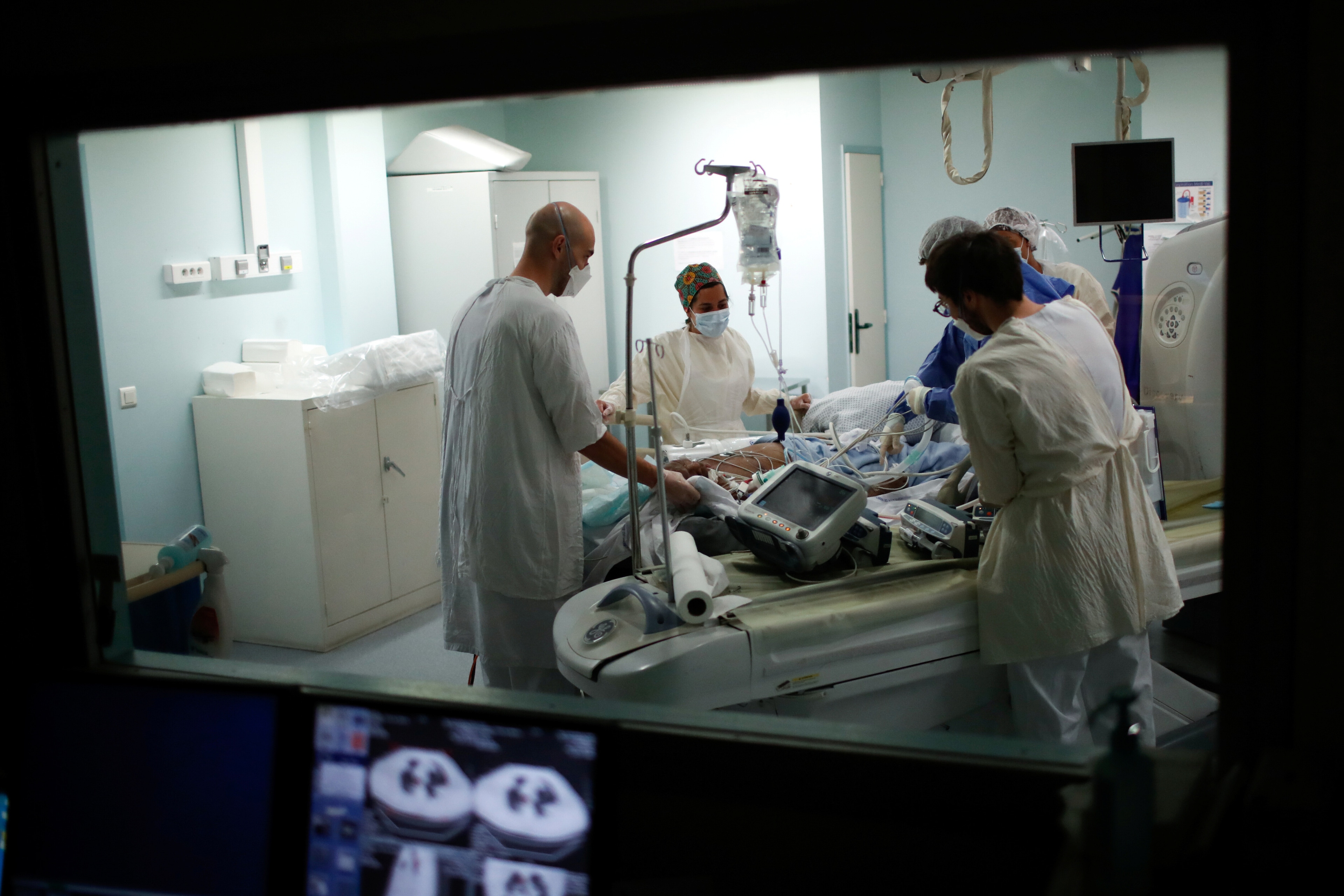The future of Alzheimer’s research

In the movie Still Alice, Julianne Moore plays a Columbia linguistics professor who is diagnosed with early-onset Alzheimer’s, an extremely rare version of the disease. Moore’s performance, for which she has already won several awards and been nominated for an Oscar, depicts her character’s swift decline from a quick-witted academic to a shadow of herself.
It is fitting that Moore’s character teaches here, where research and treatment of neurological and age-related diseases are such a priority. From the Mortimer B. Zuckerman Mind Brain Behavior Institute, where Eric Kandel—whose research in memory brought him a Nobel Prize in 2000—is the co-director, to the Taub Institute for Research on Alzheimer’s and the Aging Brain, Columbia research is making groundbreaking strides.
Scott Small, director of Columbia’s Alzheimer’s Disease Research Center, describes the disorder. The Boris and Rose Katz Professor of Neurology discusses what is known, and what’s yet to be discovered, about Alzheimer’s.
Q Can you describe the forms of the disease?
Alzheimer’s comes in two very different types. One type is controlled by a single gene, and if you get that gene from your parent, you develop an extremely rare and aggressive form called early-onset Alzheimer’s, which manifests in patients who are in their 30s and 40s. Less than 1 percent of all cases of patients with Alzheimer’s have that early onset form. The most prevalent form of the disease, though, is late-onset Alzheimer’s. The interaction of multiple genes with each other and the environment plays an important part of the risk in this form of Alzheimer’s. As a result, it is typically considered a complex form of the disease.
Q What does the current research tell us about Alzheimer’s disease?
Alzheimer’s is a disorder that percolates for decades before someone dies. So how can we tell, when we examine a brain during autopsy, whether the changes we see are caused by Alzheimer’s or were consequences of having the disease? This is where genetics can be extremely informative. In looking at postmortem brains, we have found some molecules, and Richard Mayeux [the Gertrude H. Sergievsky Professor of Neurology, Psychiatry and Epidemiology] has found genes, in the same family of proteins. Together that makes a compelling case that there is a molecular pathway that is one driving cause of Alzheimer’s disease. We are working on deciphering that.
Q Why are genes simply causative in one version and more complex in the other?
The late onset type of the disease does in fact have a strong genetic factor. But there are complicated and nuanced ways in which genes can influence the risk of developing a disease, and those are called risk factors. Of all the genes that can influence someone’s risk for getting late-onset Alzheimer’s, a gene called APOE4 is by far the strongest. If you have two copies of this gene, you have a 20 to 40 percent increased risk of developing Alzheimer’s. Now that is a significant risk factor, but it’s not the only thing at play. There are people with the APOE4 gene who don’t develop Alzheimer’s, and people without it who do. Perhaps you have the gene but you might also have other protective genes or have a healthy lifestyle. Risk factor genes interact with the environment or even an individual’s behavior.
Q What is the focus of your Alzheimer’s research?
We investigate the hippocampus of the brain to try to recognize the distinction between normal aging and diseases that affect the brain. By focusing on this one part of the brain, we can get a handle on trying to separate the two, understand them, diagnose them and, ultimately, to intervene. Many of my patients are people in their 50s, 60s and 70s who’ve noticed a change in their memory and are worried about whether this is an ominous sign, the beginning of Alzheimer’s. And while the disease does begin with subtle changes in memory, what we are now learning using imaging tools and genetics is that in fact it could be just normal aging.
Q You had a recent paper in Nature Neuroscience that suggested that a chemical in a cocoa bean derivative could reverse memory-related aging. Why is that an important finding?
It’s been shown by us, and by others, that one small part of the brain—the dentate gyrus—might be involved in normal aging. Not Alzheimer’s, but just the normal wear and tear of the aging process that causes memory loss. We also knew of studies that suggested that consuming cocoa flavanols increased function in that area of the brain and reversed age-related memory decline. Our study, which was conducted on people in their 50s and 60s, showed an improvement in this area. The important question is whether that reversal is meaningful, and that’s something we’re exploring in a future study. From a clinical perspective our goal is to be able to distinguish the earliest stages of Alzheimer’s from aging, to allay concern and ultimately to have interventions that might ameliorate age-related memory issues or—optimistically— halt Alzheimer’s entirely.
This article is published in collaboration with Columbia News. Publication does not imply endorsement of views by the World Economic Forum.
To keep up with the Agenda subscribe to our weekly newsletter.
Author: Bridget O’Brian interviews for Columbia News.
Image: Plaster phrenological models of heads, showing different parts of the brain, are seen at an exhibition at the Wellcome Collection in London. REUTERS/Chris Helgren
Don't miss any update on this topic
Create a free account and access your personalized content collection with our latest publications and analyses.
License and Republishing
World Economic Forum articles may be republished in accordance with the Creative Commons Attribution-NonCommercial-NoDerivatives 4.0 International Public License, and in accordance with our Terms of Use.
The views expressed in this article are those of the author alone and not the World Economic Forum.
Stay up to date:
Future of Global Health and Healthcare
Forum Stories newsletter
Bringing you weekly curated insights and analysis on the global issues that matter.
More on Wellbeing and Mental HealthSee all
Dylan Reim
October 29, 2025






